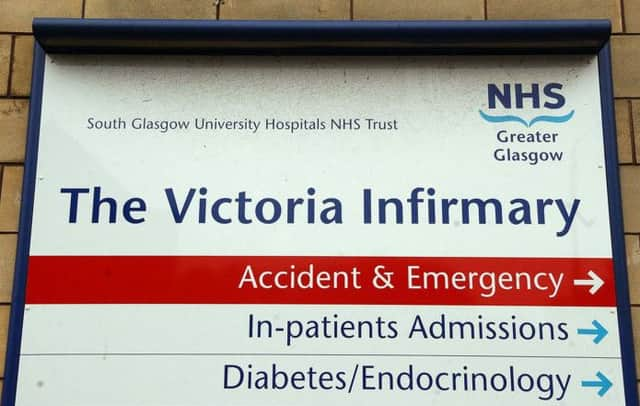Night-time discharge for patients high in Scotland


Overall 11 per cent of discharges from intensive care units (ICUs) and high dependency units (HDUs) to other wards took place between 8pm and 8am - a practice not recommended due to poorer outcomes for patients.
The report said that night time discharges took place to make room for other patients or were delayed from earlier in the day due to lack of beds elsewhere in the hospital.
Advertisement
Hide AdAdvertisement
Hide AdThe report also found that three per cent of discharges from critical care were classed as early, usually linked to lack of beds to cope with incoming patients.
The Scottish Intensive Care Society Audit Group (SICSAG) report for 2013 found that bed occupancy rates remained relatively stable at around 72 per cent for ICU and 78 per cent in HDU, but with considerable variation between units.
Night time admissions to ICU were 34 per cent and for HDU 33 per cent, which the report said highlighted the unpredictability of the service.
And the report found that 17 per cent of discharges from ICU and 19 per cent from HDU were delayed by more than six hours, with wide variation between units.
On the subject of night time discharges, the authors said these were linked to worse outcome for patients.
“Night time discharges are forced early discharges to accommodate another patient or delayed from earlier in the day due to inadequate ward beds. They may be poorly planned and/or communicated,” the report said.
“Patients perceive discharge at night as extremely unpleasant.”
The highest level of night time discharges from ICU was found at the Victoria Infirmary in Glasgow at 28 per cent in 2013, up from 15 per cent the previous year.
Advertisement
Hide AdAdvertisement
Hide AdThis was followed by Ayr Hospital ICU with at 24 per cent, a slight increase from the previous year, and Perth Royal Infirmary at 19 per cent.
In comparison other units, including Glasgow Royal Infirmary and Aberdeen Royal Infirmary, had night time discharges of five per cent or less.
In HDU, night time discharges were highest at Glasgow Royal Infirmary and Edinburgh Royal Infirmary at 29 per cent.
Statistically significant increases in night time HDU discharges were seen at Perth Royal Infirmary, up from around 11 to 18 per cent, and Crosshouse Hospital in Kilmarnock, up from just over 20 per cent to 28 per cent.
The report also looked at rates of early discharge from critical care, which it said could be an indicator of “insufficient resource”.
It said early discharge was unplanned and usually forced by the need to admit another seriously ill patient for critical care.
“Patients who are discharged early are at risk of deterioration and adverse outcomes,” it said.
The highest rate of early discharges from ICU in 2013 was seen at Inverclyde Royal Hospital at 15 per cent, followed by Ayr Hospital at nine per cent, compared to 1.4 per cent the previous year.
Advertisement
Hide AdAdvertisement
Hide AdIn HDU the highest percentage of early discharges was at the Victoria Hospital in Kirkcaldy at 8.9 per cent. Perth Royal Infirmary HDU saw early discharges rise from 2.3 per cent to 5.7 per cent.
Dr Stephen Cole, SICSAG chair, said it was welcome that night time discharges had dropped slightly from 13 to 11 per cent in the last year. But he said those units with high rates needed to look at what was happening in their hospital.
“It is not good for anybody to be discharged in darkness to an unfamiliar environment,” he said.
“We know this is a problem in terms of outcomes for patients.”
He said there could be many reasons for night time discharges, including bed pressures elsewhere in hospitals preventing patients being moved earlier.
“It is all to do with capacity and flow at individual hospitals, units and boards,” he said.
“Those who have particular problems with this are well aware of it and are trying to identify local solutions.”
But Dr Cole welcomed falling death rates in critical care, and the fact no unit had been identified as having higher than expected mortality rates.
Advertisement
Hide AdAdvertisement
Hide AdScottish Labour’s health spokesman Neil Findlay said: “These figures are a sad reflection of the pressure that health boards are facing and the knock-on impact on patients.
“Being moved from intensive care of a high dependency unit during night-time hours can be hugely stressful on patients and their families but when beds are blocked as a result of poor standards in social care then there is often little choice.”
The Scottish Government also welcomed falls in mortality in critical care units.
“While the number of patients discharged overnight has remained steady, we continue to work with health boards on this important area and hope to see further improvements,” a spokeswoman said.
“This will be informed by the patient and relative experience surveys being carried out across the country which aims to ensure that services are truly person centred.”